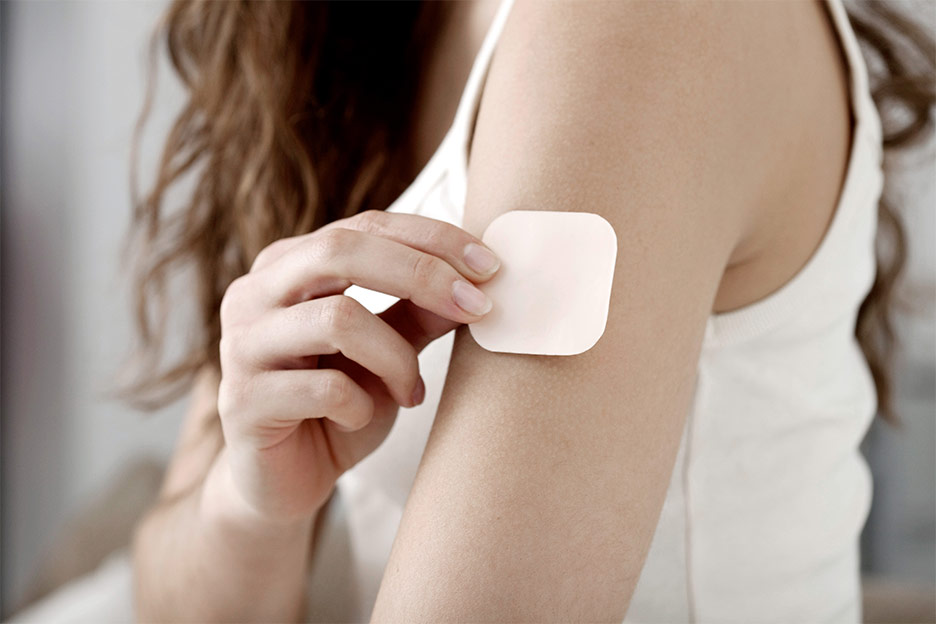When it comes to preventing pregnancy, there are so many options available these days. That being said, some birth control methods are more effective than others. The following is an overview of various birth control methods available in Canada.

Oral contraceptives
The birth control pill is the most widely known hormonal contraceptive on the market. There are two kinds of birth control pills: the progestin-only pill and the combined oral contraceptive (which contains progestin and estrogen). Progestin causes a thickening of the mucus in the cervix, also known as cervical mucus. Estrogen, on the other hand, influences the menstrual cycle, changes the thickness of the uterine wall, and prevents ovulation. These processes prevent pregnancy. Generally speaking, the pill must be taken around the same time every day to be effective. This is especially true for progestin-only oral contraceptives, which need to be taken on a regular schedule to be fully effective. A certain level of rigour is therefore required to take this type of pill, unlike combined hormonal contraceptives, which offer a little more leeway as far as when they can be taken or if you forget to take your pill. When used correctly, the birth control pill (progestin-only or combined estrogen and progestin) is 99.7% effective, making it one of the most reliable birth control methods available.
The vaginal ring
Like the birth control pill, the vaginal ring is a hormonal contraceptive that contains two hormones (estrogen and progestin). This soft, flexible, ring-shaped device is inserted into the vagina and kept in place for 21 days. It’s removed at the beginning of the fourth week, at which time menstruation will occur. A new ring is then inserted once the fourth week has elapsed. The vaginal ring has a 99.7% efficacy rate when used correctly, which makes it as reliable as the birth control pill.
The contraceptive patch
The contraceptive patch is another hormonal contraceptive containing two hormones (estrogen and progestin), which are gradually released through the skin. The patch is applied to the skin and changed weekly on the same day (e.g., every Monday) for three weeks. The fourth week is patch-free, which triggers menstruation. The contraceptive patch is 99.7% effective when used correctly.
The subcutaneous implant
The subcutaneous implant is the latest hormonal contraceptive to become available in Canada. It only contains progestin. Soft and flexible, this four-centimetre rod-shaped device is inserted under the skin of the upper arm by a health care professional. With a 99.9% efficacy rate, the subcutaneous implant is extremely reliable. It must be changed or removed every three years.
The hormonal IUD
The progestin-only hormonal IUD is a contraceptive device that’s inserted into the uterus by a health care professional and protects against pregnancy for up to five years. This contraception method is 99.8% effective. Contrary to popular belief, IUDs are just as safe for women who have never had a child as they are for those who have previously given birth.
The copper IUD
The copper IUD, which doesn’t contain hormones, is another option. Once installed in the uterus by a health care professional, this device prevents sperm from reaching the uterus; it also hinders implantation if an egg becomes fertilized. Depending on the model, the copper IUD is 99.4% effective against pregnancy for three to ten years. It can be used at any time during a woman’s menstrual cycle and also works as emergency contraception.
Intramuscular injection
Intramuscular injection is another progestin-only hormonal contraceptive that effectively prevents pregnancy. It’s administered by a health care professional as a shot into the arm, buttock, or thigh. It must be repeated every three months. When used properly, this method is 99.7% effective in preventing pregnancy. That being said, it should be noted that this contraceptive method can sometimes cause bone density loss. For this reason, it’s important to weigh the pros and cons before proceeding with intramuscular injection.
Male and female condoms
The male condom is the best known and most frequently used barrier method. There is also a female condom, which must be inserted into the vagina before sexual intercourse. Both of these contraceptive methods prevent fertilization by keeping sperm from entering the vagina and reaching the uterus. Male condoms are 98% effective when used correctly and female condoms are 95% effective. Unlike other contraceptive methods, both of these options offer the added advantage of protecting against sexually transmitted infections (STIs).
The diaphragm
The diaphragm is a barrier method that prevents sperm from reaching the cervix, thus preventing fertilization. This soft, dome-shaped device is inserted into the vagina, against the cervix. It should always be used with a spermicide such as a gel, liquid, film, or suppository that destroys sperm. It’s important to note that spermicide should not be used on its own due to its limited effectiveness. When used correctly, a diaphragm used with spermicide is 94% effective against pregnancy. One advantage of this device is that it can be used multiple times, unlike condoms, which can only be used once.
The cervical cap
The cervical cap is a barrier method similar to the diaphragm. This flexible device is inserted into the vagina before intercourse, against the cervix. It should always be used with a spermicide. Cervical caps come in several sizes, because they need to properly cover the cervix. The size of a woman’s cervix can vary depending on whether or not she’s been pregnant before. In fact, even when used perfectly, this method may be more or less effective depending on whether the woman has previously given birth (74%) or not (91%).
The contraceptive sponge
The contraceptive sponge is a barrier method that contains a spermicide. It is inserted into the vagina, against the cervix. It prevents sperm from entering the uterus by blocking the entrance to the cervix. The spermicide also kills any sperm upon contact. The contraceptive sponge provides 12 hours of protection and doesn’t need to be changed if you have sex more than once during this period. When used properly, its efficacy rate is around 80%. That being said, it increases the effectiveness of other contraceptive methods (e.g., condoms).
Emergency oral contraception
Also known as the “morning-after pill,” emergency oral contraception can be used after a woman has unprotected sex, to protect against contraceptive failure (e.g., forgetting to take the pill, broken condoms), or following a sexual assault. Emergency oral contraception can be used up to five days after a person has unprotected sex, but is most effective when used within 72 hours. The copper IUD can also be used as emergency contraception if a woman has had unprotected sex within the past seven days. It’s important to know that the morning-after pill is not an abortion pill and won’t work if the egg has already been fertilized, depending on where the woman is in her menstrual cycle or whether she’s ovulating. It also doesn’t prevent pregnancy if the person who took the pill has unprotected sex again in the next days or weeks. Finally, this contraceptive should only be taken in emergency situations and should not replace your regular contraceptive method, since it is not as effective.
Last updated on February 8, 2023
Trust your pharmacist!
To learn more about possible birth control options, stop by your local Brunet pharmacy.
The following content might interest you
5 sexually transmitted diseases to watch out for
6 questions to ask yourself before choosing a method of contraception
6 secrets for good sexual health
Sexual health and sexually transmitted infections (STIs) (French-only podcast)
